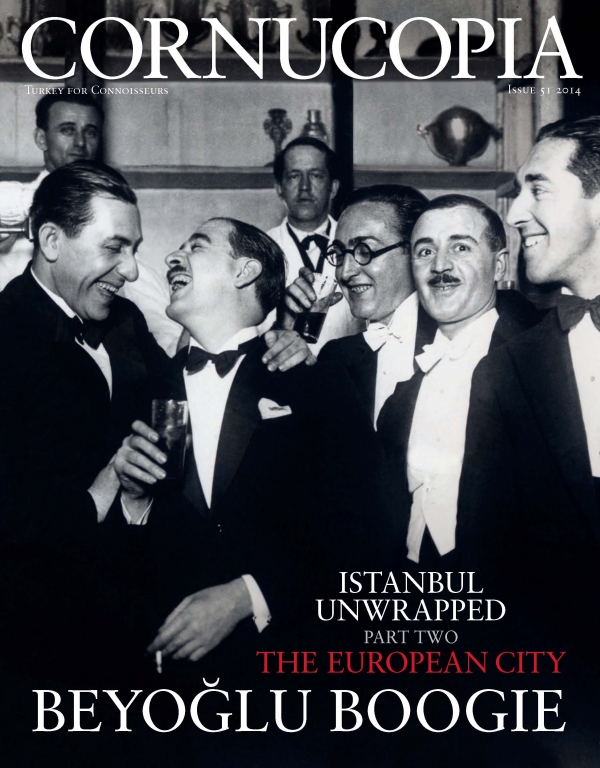Buy or gift a stand-alone digital subscription and get unlimited access to dozens of back issues for just £18.99 / $18.99 a year.
Please register at www.exacteditions.com/digital/cornucopia with your subscriber account number or contact subscriptions@cornucopia.net
Buy a digital subscription Go to the Digital EditionTrapped by traffic jams, hemmed in by housing estates and skyscrapers, Istanbullus can console themselves by dreaming of the city as it was a hundred years ago.
In the reign of Abdülhamit II, it was known as Asithane “the house of happiness”. Far more than London or Paris, Istanbul then looked completely different. As Nurhan Atasoy’s magnificent new album, Souvenir of Istanbul: Photographs from the Yildiz Palace, shows, the streets were free of crowds, cars were unknown and most houses were built of wood (almost all, including the mansions of Süreyya Pasha, Fehim Pasha and Osman Pasha, shown in the book, have been pulled down). The Bosphorus was used by only a few elegant ferry boats and caiques. Shop signs were not in Turkish and English, but in Ottoman, French, Greek and Armenian.
Sultan Abdülhamit had many faults, but a lack of curiosity was not one of them. While reluctant to be photographed himself – perhaps he felt it inappropriate for the Caliph of the Muslims – he loved photographs of others. In the library of his palace city of Yildiz, on a hill above the Bosphorus, he accumulated books, manuscripts and 36,535 photographs in 911 albums.
Souvenir of Istanbul reproduces some of the views of Istanbul from the sultan’s library. It contains 268 photographs each printed on a separate page, and thirteen double-page panoramas.
Saved from the attach on Yildiz in April 1909 by the gallant librarian (who kept some books and photographs for himself) and removed to Istanbul University’s library in 1925, the photographs are now, after years of neglect, under proper care
As Bursa lay in ruins after the earthquake of 1855, the man the Sultan sent to rescue the city was Ahmed Vefik Pasha. A brilliant man of letters, champion of Ottoman causes and very undiplomatic diplomat, he was to leave an indelible mark on Turkish culture. David Barchard reinstates a wayward hero.
Christian Tyler, author of Wild West China, The Taming of Xinjiang, assesses Ergun Çağatay’s extraordinary volume of photographs of the wider Turkic world
The çörek is full of symbolism, and its association with religious festivals reflects earlier pagan customs. All sorts of buns, loaves and çörek are eaten at Sabantoy, the colourful June festival celebrated by the Altay, Çuvaş, Tatar and Başkurt peoples of Central Asia.
More cookery features
Heath W Lowry, in the first of a series of articles this issue, pays tribute to the city that gave the Ottoman state its first capital.
John Carswell on the city that married the courtly arts of Asia to the princely aspirations of Renaissance Europe. Photographs by Jürgen Frank
No day passes in Turkey when horses are not racing – and when it comes to prize money the country now leads the field. Donna Landry visits Karacabey, the national stud near Bursa, with the Ottoman historian Caroline Finkel and discovers an equestrian paradise


Cornucopia works in partnership with the digital publishing platform Exact Editions to offer individual and institutional subscribers unlimited access to a searchable archive of fascinating back issues and every newly published issue. The digital edition of Cornucopia is available cross-platform on web, iOS and Android and offers a comprehensive search function, allowing the title’s cultural content to be delved into at the touch of a button.
Digital Subscription: £18.99 / $18.99 (1 year)
Subscribe now